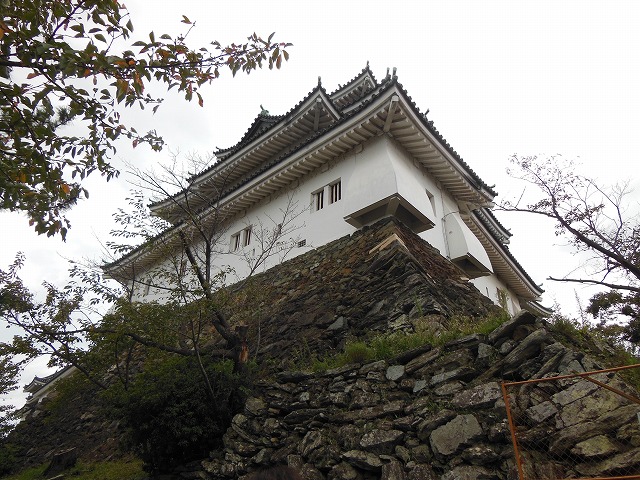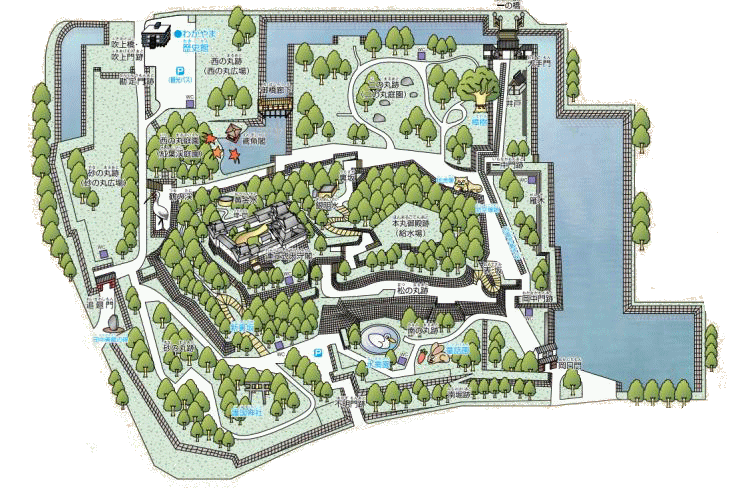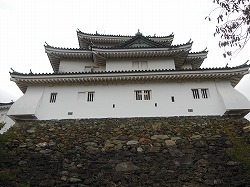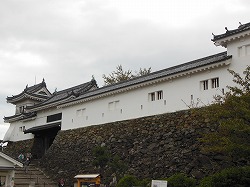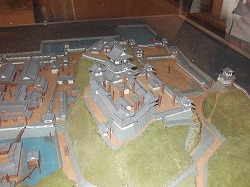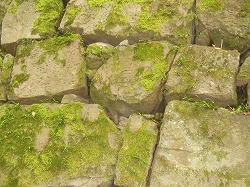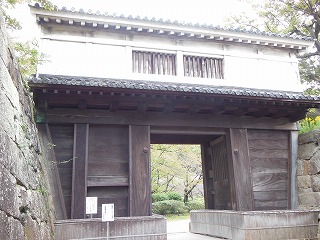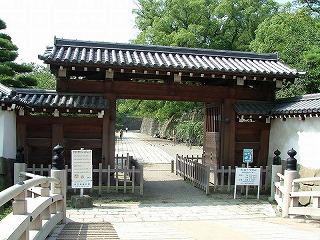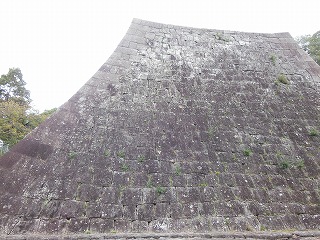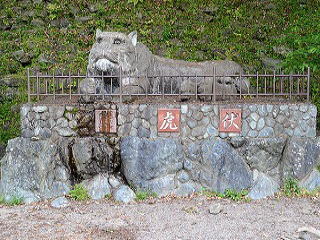中世後期の和歌山平野では、雑賀衆と呼ばれる地縁的共同体が自治をおこなっており、戦国大名は居なかった。雑賀衆は海運、漁業、農業などに
たずさわりながら、鉄砲を使いこなし、戦国大名や寺院の傭兵として活動していた。
1585年(天正13)、羽柴秀吉は雑賀衆を蹴散らして紀州を平定し、弟の秀長に命じて紀ノ川河口部の“岡山”(虎伏山)
に城を築かせた。これが和歌山城である。
その後、秀長は郡山城(奈良県大和郡山市)に移り、和歌山城へは家臣の桑山重晴を城代とした。
関ヶ原の戦い(1600年)の後、浅野幸長が37万6千石で紀伊に入国し、和歌山城主となった。浅野幸長は連立式天守を建て、現在の本丸・二の丸・
西の丸に屋敷を造営して、大手門を岡口門から一の橋に移し、本町通りとして城下町を整備した。
1619年(元和5)、徳川家康の10男頼宣が55万5千石を拝領し、紀州藩が成立した。頼宣は二の丸を西に広げ、
砂の丸・南の丸を新たに造成した。
§Wakayama Castle§
In 1585, Toyotomi Hideyoshi subjugated the Kishu territory (the area now known as Wakayama) and ordered his younger brother,
Hidenaga to build a castle on Mt. Okayama (Mt. Torafusu). This is the castle we know today as Wakayama Castle.
Todo Takatora was in charge of overseeing the building of the castle. This castle can be said to be the first early modern castle
that he was involved in building.
When Hidenaga was moved to Yamato Koriyama Castle, Kuwayama Shigeharu was placed in charge of the castle. Later, when Hidenaga’s
family line came to an end, Kuwayama became lord of the castle. During this time, the Toyotomi and Kuwayama periods, construction was
mainly focused on the area at the top of the mountain and the Okaguchi area.
In 1600, after the Battle of Sekigahara, Asano Yoshinaga came to Kishu. With Asano as the daimyo, the area produced 376,000*koku
of rice. He worked to increase the size of the castle, developing the main castle keep into its current interconnected-style and building
a residence in the areas that are now known as Honmaru, Ninomaru, and Nishinomaru.
The main gate was changed from the Okaguchimon Gate to the Ichinohashimon Gate. The surrounding castle town was built around Honmachidori Ave.,
the main avenue that extended out from Ichinohashimon Gate.
In 1619, Yorinobu, the 10th son of Tokugawa Ieyasu, came to the area, which now yielded 555,000*koku, and established the House
of Kishu.Part of the inner west moat was filled in to allow for the Ninomaru area to be expanded. The Minaminonaru and Sunanomaru areas were
incorporated into the inner ward of the castle, and the castle came to look much the same as it does today.
*A koku is a unit used to express power and economic strength equivalent to approximately 150kg of rice,
or enough to feed one person for a year.


